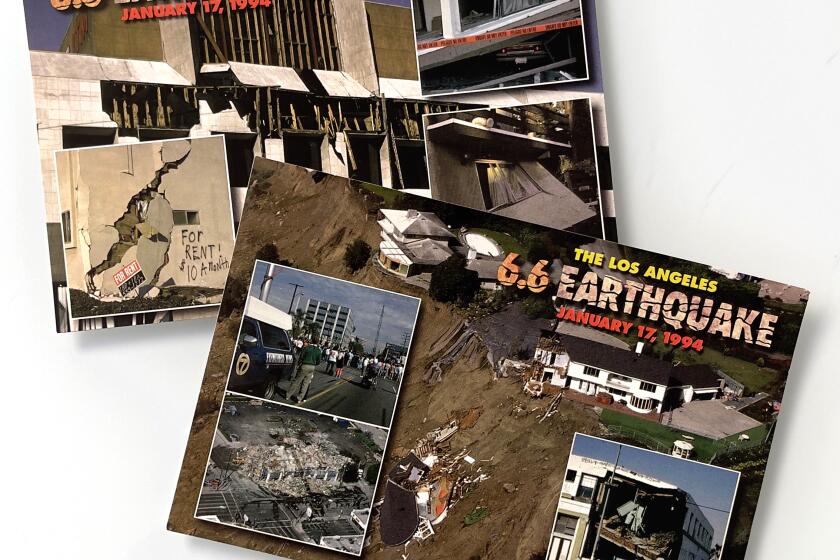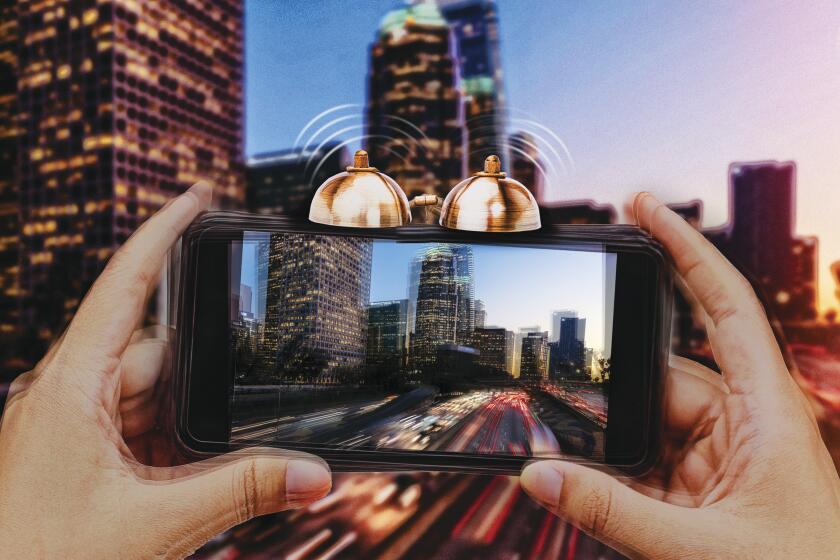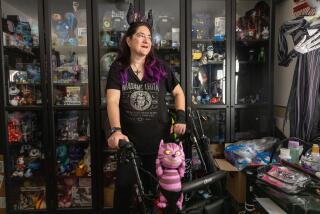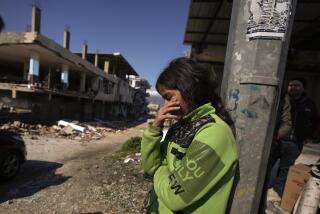How to prepare for a disaster if you live with a disability
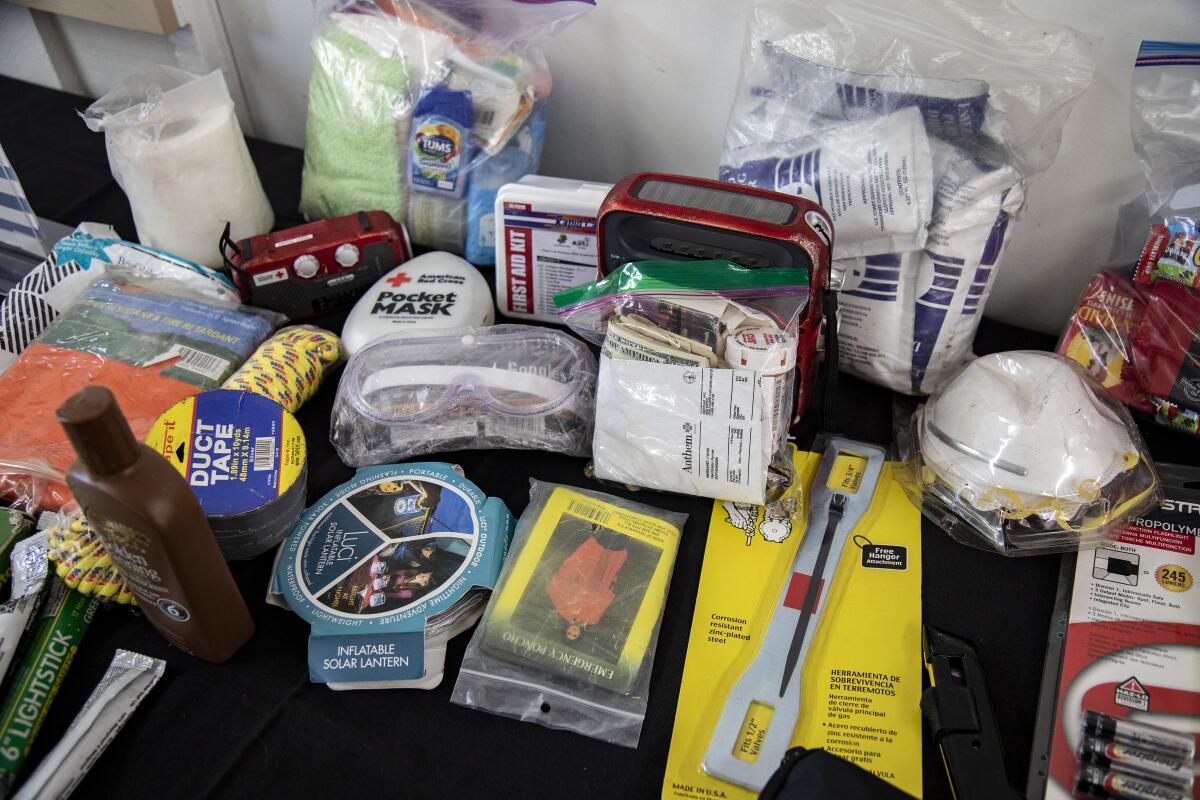
Cheryl Drymon, 72, has been using mobility aids for four years. It started when she tore her Achilles tendon and then her meniscus. Now she has trouble with tasks like getting in and out of a car.
After learning about disabled seniors who died in 2018’s Paradise fire, the Santa Monica resident fears that when the Big One strikes, she’ll be forgotten.
For those dependent on medications or who need mobility assistance like Drymon, evacuating at a moment’s notice or stockpiling supplies can be complicated.
Everyone should have certain supplies on hand, but a person with a disability will have to customize emergency kits, evacuation plans and recovery models to their individual needs. Here’s how to start.
Something for everyone
There are things everyone can do, no matter their ability or needs, said Ted Horton-Billard III, through an ASL interpreter. Horton-Billard is the disaster management coordinator for the Disability Community Resource Center.
The most important thing you can do? Identify your needs, Horton-Billard said.
Take a personal inventory of your day-to-day needs and put them into an emergency preparedness plan. Keep a detailed list of your medications and their dosages, who your doctors are and how they can be reached, what equipment you need, and what your insurance policy is — to name a few.
Each plan will look different, but Lewis E. Kraus, co-director of the Pacific-region wing of the Americans With Disabilities Act Center, said that his group’s four-step framework can be adapted for anyone.
- Find five trusted allies and share your plan: You should have at least five people who are fully informed about your emergency plan, including what supplies you have and need, your evacuation plan and all of your medical information. Write down their contact information so that you have it as well. Do not rely on just one person or on having contact information stored digitally.
- Prioritize your health needs and create lists: Have physical and digital copies of everything: doctors and their contact information; medications and dosages; what kind of equipment you use, where you store it and how you use it. This information should be accessible to your allies and emergency responders.
- Create your emergency kits: You should have an emergency kit for your home, your car, on your person and at work. These kits should have the emergency basics, as well as supplies for any specific needs. (For suggestions on supplies for specific needs, keep reading.)
- Plan how and when to evacuate: Typically an earthquake will not trigger an evacuation, but wildfires do. Plan at least two evacuation routes and practice them. Make sure they’re accessible to you and your needs. If you need assistance evacuating, dial 211 in L.A.
Whether you’re on a fixed income or just trying to save a few dollars, there are ways everyone can prepare for disaster on a budget. Here’s a checklist and tips on insurance, supplies and more.
For specific needs
Each disability or medical condition requires different customizations. And each individual will also have unique needs. Preparation for a disaster ultimately depends on you and your needs.
Mobility
If, like Drymon, you use mobility aids or have physical disabilities, Horton-Billard said it’s important to keep them nearby. If it’s a cane, keep it near your bed and make sure it isn’t going to fall over during the shaking. If it’s a wheelchair, make sure you can get to it on your own if need be and that it’s stored so it won’t roll away.
You can also consider keeping an alternative to your usual mobility aid. Ready.gov recommends that if you use a power wheelchair, you should have a lightweight manual chair available as a backup.
When it comes to seeking shelter during an earthquake, the standard is to drop, cover and hold on. That may be easier said than done for someone who uses a wheelchair, for example. Lock, cover and hold on are the steps that people with physical disabilities or who use mobility aides are urged to take to stay safe, Horton-Billard said. No matter your physical ability, he said, focus on keeping your neck and head covered. That could mean holding something hard over the back of your neck to deflect any falling debris.
Horton-Billard also emphasized preparing your living space to fit your physical needs. Everyone should keep large objects away from exit routes, and that’s especially important if you have a physical disability. You need to have a navigable exit, and someone coming to assist you needs a route in.
Cognitive
A major disaster can be disorienting for anyone, but especially those with cognitive disabilities. Susan Howland, program director at the Southern California chapter of the Alzheimer’s Assn., said preparation is key — for the person with the disability as well as their caretaker.
Howland said most people with Alzheimer’s disease can’t live on their own, meaning their caretaker, whether a family member or a professional, needs to prepare themselves and the patient.
Keep paperwork associated with the person’s medical care — such as power of attorney documentation, diagnosis documentation and other medical history information — in a binder that’s easy to access.
An earthquake or another disaster can be a serious stressor for a person with a cognitive disability.
Howland recommends writing a person’s name on their clothing so they can be easily identified if they become lost. Also, as part of their emergency kit, keep some unwashed laundry in a sealed bag — that way a search dog can have a strong scent to follow.
Comfort items are especially important. Blankets, noise-canceling headphones and music, or a deck of cards — Howland said to be sure to have the items on hand that help a person calm down or relax at home.
Explaining drop, cover and hold on may present a challenge, as well. Modeling behavior and breaking it up into single actions versus a three-step process are ways Howland recommended to make the process easier.
Try to return to normal settings and routines as quickly as possible. Howland said that if you can stay away from a shelter during an evacuation and find a more controlled environment, such as a hotel or a friend’s house, opt for that.
Limiting access to news can prevent further distress. Howland said that people with Alzheimer’s often have difficulty differentiating what’s happening now and what’s happened in the past. So a newscast recapping events could cause confusion that another earthquake is happening now, for example.
Howland emphasized that with a progressive disease such as Alzheimer’s, the bag you pack and the plan you make today might not work in a year. Adaptability and staying on top of emergency preparedness, she said, are especially important when caring for someone with a cognitive disability.
People are much more important than kits. People will help each other when the power is out or they are thirsty. And people will help a community rebuild and keep Southern California a place we all want to live after a major quake.
Vision
The ADA recommends that you mark your disaster supplies with fluorescent tape, large print or braille. You can also store it in a designated area so that you always know where to go.
Flashlights with extra-wide beams and high-powered bulbs can help someone with low vision in case of a loss of electricity. Keeping extra batteries in your pack will make sure you don’t lose light.
If you wear contact lenses or glasses, keep a backup pair in your emergency kit.
Hearing
Horton-Billard, who is deaf, said hearing is crucial during a disaster.
Most warning systems use audible cues to alert people to danger. Horton-Billard recommended downloading warning apps that have vibrating alerts.
He also recommended having a way to communicate with emergency personnel. Picture communication cards are one possibility.
For post-disaster updates, when the power might be out, you’ll want a battery-powered or hand-crank radio. Look for a weather radio with an audio-to-text feature so you can stay updated on evacuation orders and other warnings.
Breathing
Those with breathing concerns need to bring extra supplies with them and account for a loss of power when it comes to breathing equipment.
Here in California, our two disasters, wildfires and earthquakes, both pose a threat to those with breathing concerns. Ash and smoke pose a direct threat to the compromised airways of someone with a breathing disability, and both disasters often result in a loss of power.
Towels, masks, rags, anything you can grab to keep your airway protected short term is important to have in your emergency kit. An N-95 mask is the most effective for those with compromised respiratory systems and should be kept for emergencies.
Breathing equipment, including oxygen and CPAP machines, should be accounted for when creating your emergency plan. Find out where you can go get more oxygen in case of a disaster, and keep extra tubing and supplies in your own kit. For a CPAP or similar machines, invest in a backup generator in case the power goes out.
MyShake is the early-warning app recommended for Southern Californians. But there are others you can download. What are they and which ones might you want?
Medications and equipment
If you’re dependent on medication, make sure you won’t run out. Emergency directives recommend having three to four days’ worth of medication on hand. For prescriptions, that is often easier said than done.
Insurance thresholds and allowances often only allow as much as the patient needs for the time period that they need it, nothing less — but definitely nothing more.
Horton-Billard recommends talking to your doctor to see if you can get an advance on your prescription for emergency purposes. It’s not a guarantee, but it’s worth asking.
Devices that run on electricity need to have a backup power source in case the power goes out. This is good to keep in mind not just for disasters but also for rolling blackouts during hotter months.
If you have to evacuate, you’ll have just a few moments to do so, so make sure your equipment is transport-ready and can go with you out the door safely and quickly.
Keep a running list of the medications you’re taking and at what dose, said Barbara Mariscal, senior disaster program manager for the American Red Cross Los Angeles region. Even at home, it’s easy to forget which medications and how much of it you’re taking at any time — not to mention when you’re at an emergency shelter because you’ve been evacuated. Having that list, she said, will allow medical staff at shelters or at the hospital to get you what you need sooner.
Service animals
Many people with disabilities rely on service animals for assistance. Just like any human, service animals need extra supplies in case of disaster.
Although a service animal is better trained than a family pet and therefore more likely to handle the stress of a disaster better, their needs are just as important as any other animals’.
When building your earthquake kit, be sure to include animal-specific items.
You need bowls for water and food, carriers, leashes and waste collection supplies. Creature comforts, such as a favorite toy or blanket, can help ease the emotional stress an animal might face during an earthquake.
Microchipping and registering your animal is vital, said Denisse Cobian-Tobler, vice president of brand strategy at Michelson Found Animals Foundation.
A collar with the appropriate information or other forms of identification on your animal, said Susan Anderson, director of disaster response and national field response for the ASPCA, are important steps to help ensure that your animal will be returned home safely after an earthquake.
Copies of vaccination records and the contact information for your veterinarian should also be included in your important documents, as well as their certification as a service animal.
Your pets may become frightened during and after an earthquake. Be sure you have what they need to keep them safe, and also if you have to leave home for a while.
More resources
Americans with Disabilities Act Center
Disability Community Resource Center
L.A. County emergency services
Alzheimer’s Assn. 24/7 helpline
More to Read
Sign up for Essential California
The most important California stories and recommendations in your inbox every morning.
You may occasionally receive promotional content from the Los Angeles Times.
